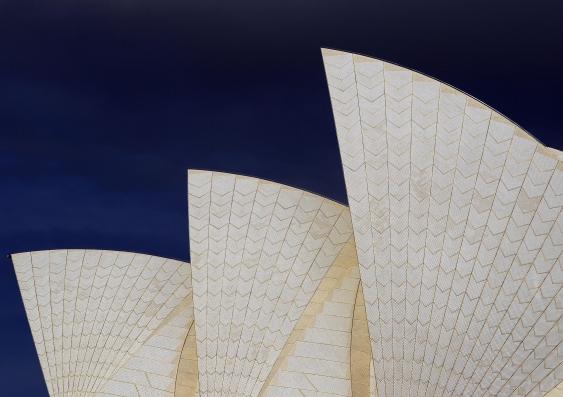Leaving a legacy: UtzonтАЩs work in 21st Century
How does the Sydney Opera House measure up in terms of sustainability?┬аThis is one of the presentations at a major international symposium to be held this week entitled тАЬWhat would Utzon do now?"┬а
How does the Sydney Opera House measure up in terms of sustainability?┬аThis is one of the presentations at a major international symposium to be held this week entitled тАЬWhat would Utzon do now?"┬а

How does the Sydney Opera House measure up in terms of sustainability?
This is one of the presentations at a major international symposium to be held this week entitled тАЬWhat would Utzon do now?тАЭ
The Symposium, facilitated by 91╠╜╗и and held at Sydney Opera House, will explore advances in the design, delivery and management of architecture and more broadly, urban environments.
Designed to reflect the late architect J├╕rn UtzonтАЩs diverse influences and attributes, the event is interdisciplinary, centring on four themes: Architecture, City Making, Political Economy and Heritage.
Utzon is best known for his public architecture, most notably, the Sydney Opera House, as well as Bagsv├жrd Church in Denmark, the Kuwait National Assembly and the Meli Bank in Tehran.
тАЬThe Sydney Opera House is not only a stunning building, but it is in fact a strikingly sustainable one,тАЭ says Dr Paul Osmond, from 91╠╜╗итАЩs Faculty of Built Environment, who will present at the event. тАЬThatтАЩs partly because Utzon built it to last тАУ itтАЩs got a projected life cycle of 250 years тАУ but also because of its social and cultural benefits.тАЭ
тАЬSustainability is about more than just being тАШgreenтАЩ,тАЭ says Dr Osmond of the 40-year-old icon.
Dr Osmond says the next generation of tools to measure sustainability are already being developed. These tools, which employ a lifecycle approach to building design, construction and operation, incorporate a тАЬquadruple bottom lineтАЭ ┬аadding cultural benefit to the other measures such as environmental, social and economic.
тАЬIf Utzon had been building the Opera House today, in all likelihood he would have taken to renewable energy technologies in the same way he adopted cutting edge computer technology,тАЭ says Dr Osmond. тАЬBut it probably wouldnтАЩt have influenced the form and character of the House.
тАЬSustainability is not merely an assemblage of ecotechnologies тАУ that is, тАШgreen blingтАЩ,тАЭ he says. тАЬIt is the natural outcome of good design when approached from an integrated life cycle approach.тАЭ
Other presentations at the Symposium include:
тАЬIt is appropriate that the debate around Utzon should return to the location of his most significant yet controversial creation, 40 years after its completion,тАЭ says architect and the Dean of 91╠╜╗итАЩs Faculty of Built Environment, Professor Alec Tzannes, who is the event convenor.
тАЬWhile the inspiration of his legacy is important, it is also critical to debate the role of cultural production in urban environments,тАЭ says Professor Tzannes.┬а
The keynote speakers are Vishaan Chakrabarti, Marc Holliday Associate Professor of Real Estate Development at Columbia University; Finnish architect and former Professor at Helsinki University of Technology Juhani Pallasmaa; and Liu Jiakun, Founder and Principle Architect of Jiakun Architects.
Professor Chakrabarti will also present a public lecture at 91╠╜╗и ahead of the event, тАЬA Country of Cities тАУ Building Hyperdensity and Civic DelightтАЭ.
What: The Fourth International Utzon Symposium and the 7th Annual Paul Reid Lecture in Urban Design┬а(the first in the 2014 BE Utzon Lecture series)┬а
When: Friday 7 March to Sunday 9 March, 2014 (Symposium) and 6pm for 6.30pm start (Lecture)
Where: Sydney Opera House and 91╠╜╗и CBD campus (Symposium) and the John Niland Scientia Building, 91╠╜╗и (public lecture, 5 March)
The event is a collaboration between 91╠╜╗и Built Environment, the J├╕rn Utzon Research Centre, the University of Portsmouth and Aalborg University, Denmark.
For more information go to┬а
Representatives of the media are invited to attend this event for FREE.
Media contact: Susi Hamilton, 91╠╜╗и Media Office, (02) 9385 1583 or 0422 934 024 or susi.hamilton@unsw.edu.au